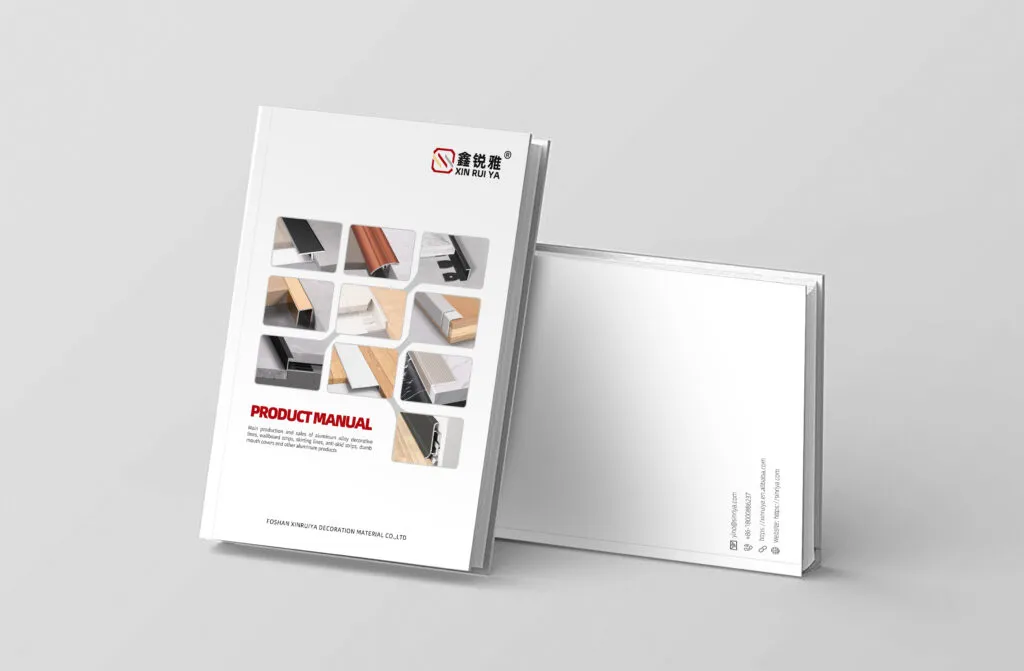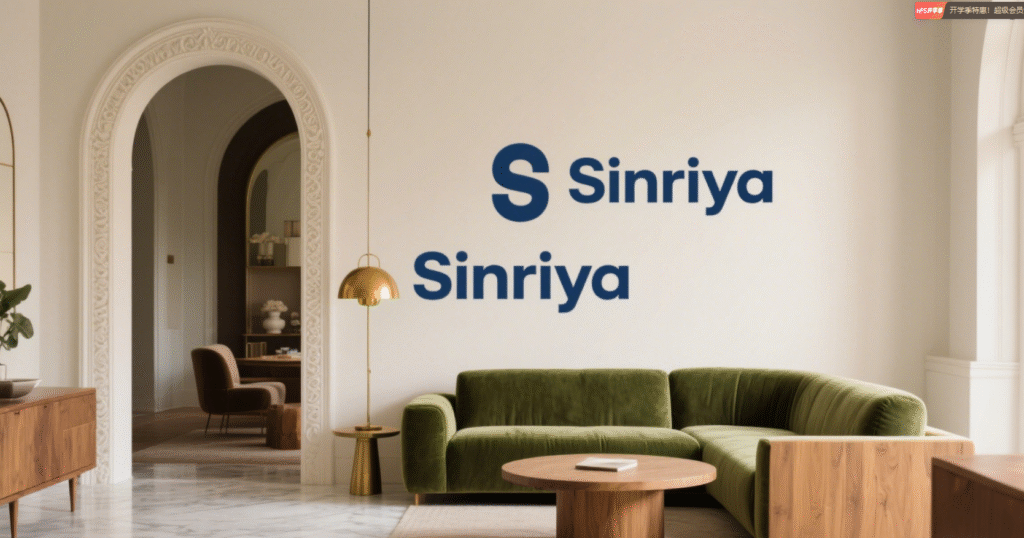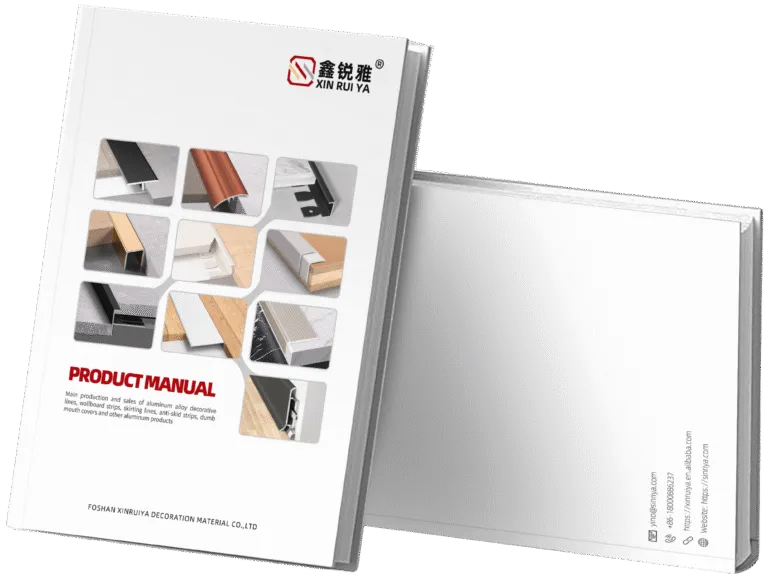
Hello everyone, Leo Liang here. For years, from our base here at Sinriya in Foshan, I’ve had the privilege of being at the crossroads of manufacturing and design. My days are filled with conversations—not just about our aluminum products, but about the very essence of modern architecture with the designers and architects who are shaping it. One of the threads I’ve noticed persisting is an unyielding quest for minimalism, clean lines, and material honesty. The swoony, overwrought styles of yesteryear are giving way to something more restrained, more considered. And at the very heart of this trend, I envision an unsung hero gaining popularity: the aluminum trim system. No longer just a utilitarian afterthought for closing a gap or protecting a corner. It’s a tried-and-true one, finding its place as a working tool of design, a pen of precision in the architect’s hand, capable of giving form, creating rhythm, and a building’s character with subtle, powerful precision. In this blog post, I’d like to take you beyond the spec sheet and talk about how such systems are not mere finishes, but building blocks of high-level design.

What Exactly Makes Architectural-Grade Aluminum So Special?
When we mention aluminum in the context of high-end architecture, we’re not talking about the stuff soda cans are made of. There’s a world of difference, and for the pro, it’s good to be aware of this. The go-to reference for architectural extrusions, and the one we use here at Sinriya, tends to be the 6063 aluminum alloy. Think of it as the designer’s best friend. It offers a superior surface finish, of the utmost importance for appearance uses, and good corrosion resistance, an absolute necessity for exposure to the elements. Its 6061 alloy cousin is a workhorse of a sort—stronger, but too strong too frequently, and less well-suited to the fine details and perfect finishes we demand. The “temper” or hardness we most commonly use is T5, which gives the profile the necessary strength after artificial aging after extrusion.
But it’s only half the story with raw material. The finish that actually makes it come alive and durable. The two primary ways are anodizing and powder coating. Anodizing is an electrochemical technique of depositing the natural protective oxide layer to thicken it. It creates a beautiful, metallic appearance that is highly durable and resistant to fading. Clear or black anodizing are classic standbys for that high-tech, cutting-edge look. Powder coating, on the other hand, involves the application of a dry powder electrostatically and subsequently curing it with heat. This system offers great color and texture, and high-performance paint must meet rigorous tests like AAMA 2605, under which it can withstand decades of UV exposure, salt spray, and humidity without extreme fading or chalking. It’s this level of material science that makes a day-one-appearing trim different from a system that can ensure the architectural integrity of a building through a life cycle.

How Does Aluminum Trim Transform Basic Panels into a High-Brow Façade?
One of the most powerful applications of modern aluminum trim is in the creation of panelized façades. Architects increasingly are using large-format panels—whether fiber cement boards like James Hardie® panels, high-pressure laminates (HPL), or engineered wood siding—to produce sleek, monolithic surfaces. The dilemma is, though, in the details. How do you address the seams between these panels? How do you create clean, weather-tight corners? That’s where a well-conceived trim system, like our Sinriya Reveals, really shines. It’s not concealment; it’s revealing the joint.
Instead of trying to make seams hide behind caulk that will fail and stain later on, an aluminum reveal trim creates an intentional, neat shadow line. A 1/2-inch reveal vertically down the side of a building will introduce a rhythm and sense of proportion. Horizontal trims will break up an vast wall, so that it is not overwhelming. The profiles are designed as much for their appearance as for use. They feature drip edges to carry water away from the wall assembly and are built to accommodate the natural expansion and contraction of many panel materials. For example, a fiber cement system must allow for the minimum panel movement without being overcome by the weather seal. By creating a potential problem—the joint—a deliberate design feature, aluminum trim turns what might otherwise be a plain cladding material into a highly engineered, sophisticated building envelope. It’s a reminder that some of the best design is to be found in the clever resolution of details.

Can a Simple Groove Redefine a Building’s Entire Character?
Let’s talk about shadow lines, or “reveals.” It sounds simple—it’s just a groove. But in the hands of a skilled designer, that groove is a powerful tool for sculpting with light. I’ve seen projects where the strategic placement of reveals has completely transformed a flat, uninspired surface into something dynamic and captivating. This is because shadow lines gain depth and visual interest. They break up the uniformity of a surface and lead the eye. Look at a minimalist painting; the power is composition and negative space. A shadow line is the architectural equivalent of negative space.
We design trims that create reveals of decreasing depth and width, from a dainty 1/4-inch channel to a more ostentatious 1-inch recess. The effect changes entirely with the sun’s position throughout the day. A harsh reveal which is presently a black, defined line during noon can turn into a subtle gradient of shadow as the sun sets. The movement brings a building to life. Also, such reveals can convey the reason behind the building’s construction. They can be applied to window heads and sills and create a unifying visual language that ties the entire façade together. We’ve even had architects use our trim to create complex geometric designs, turning a wall into an art installation on a giant scale. It’s a reminder that the most effective design details aren’t necessarily the largest or the loudest, but the most thought out and worked-up. It illustrates that an ordinary groove is never just a groove; it’s opportunity.
Where Else Can Aluminum Trim Make an Unexpected Difference?
Although exterior facades are a primary focus, the innovative application of aluminum trim is rapidly moving indoors. The same design principles of clean lines, material transition, and solidity apply, but the applications can be even more creative. I’m seeing a huge trend towards the use of trim to manage transitions between different interior materials, an ongoing area of frustration for designers today. For instance, where a drywall wall that is 5/8 inches thick meets a wood paneled feature wall, a thin aluminum channel can create a flawless, clean break. It’s just so much nicer than a messy caulked joint. This is what we call a “trimless” look—it’s integrated and intentional, not a hiding place.
Another exciting space is in ceilings. Designers are calling out “ceiling clouds” or dropped spaces for acoustics or design, and aluminum trim is perfect for delineating these elements crisply. But the most advanced use I’ve seen is integrating technology directly into the trim profiles. We are developing and discovering increasing demand for profiles with an embedded channel that will hold low-voltage LED strip lighting. Consider a baseboard that is not just a baseboard but also emits gentle, ambient light, down the floor. Or a wall reveal as a light source unto itself. This integrates architecture, lighting design, and technology into one singular entity. It’s a move away from seeing trim as a passive element and towards seeing it as an active part of the building’s systems, opening up a whole new world of design possibilities.
What Separates a Good Trim Installation from a Great One?
This is a topic I’m passionate about because I’ve seen beautiful, expensive materials ruined by a poor installation. From my experience of talking to installers and contractors in the trade, the separation between a great installation and an exceptional installation is one word: precision. Nonaligned joints, inconsistent gaps, and visible fasteners can destroy the minimalist appearance. An exceptional installation needs to look effortless, like trim had attached itself organically. This type of quality doesn’t happen by accident; it’s due to both experienced labor and a well-designed system.
This is precisely why we invested so much in developing our own proprietary technology for the Sinriya Reveals system. It was developed based on direct field feedback. Installers were tired of systems that were temperamental and difficult to align precisely across long spans. Our system utilizes a trade-secret clip and lock solution that ensures each piece of trim snaps securely and precisely in place with the next one. Not just speeding installation time—a substantial cost factor on any project—it essentially removes risk of human mistake in alignment. It guarantees the 1/2-inch reveal that the architect needs is a perfect 1/2-inch reveal from one end of the building to the other. A better system anticipates the actual world conditions and presents a stunning solution. It allows the installer to deliver the architect’s design flawlessly, which is what it’s all about.

Is Aluminum Trim a Truly Sustainable Option for the Future?
In today’s world, no material specification is complete without considering its environmental impact. For architects and designers working on LEED-certified projects or who are simply committed to responsible design, this is a top priority. I’m proud to say that aluminum is a standout performer in this regard. Its most significant environmental credential is its infinite recyclability. Aluminum can be recycled endlessly without degradation in the material characteristics. It is a closed loop system. In fact, most of the aluminum used today, including in our products, is recycled, which reduces the amount of energy needed to produce it—by up to 95% compared to producing primary aluminum.
This directly leads to green building certifications like LEED, falling under the Materials and Resources (MR) credit category. Apart from recyclability, the finishes that we use incorporate an environmentally conscious approach. Advanced powder coating technology has the result of near-zero Volatile Organic Compounds (VOCs), which is crucial both for exterior air quality as well as indoor spaces. Finally, the durability of aluminum leads to a longer building envelope lifecycle. A product that will not require replacement or repair for 30, 40, or 50 years is sustainable by definition because it reduces the use of resources over the life of the building. By specifying a high-end aluminum trim system, you’re not just designing; you’re committing to durability and sustainability in the long term.
How Do We Begin to Think of Trim Not as a Component, but as a Driver?
As we’ve traveled, the role of aluminum trim has evolved exponentially from its modest origins. It’s a pivotal element in façade engineering, an artistic vehicle, an interior detail solution, and a sustainability hero. The shift I invite all designers, architects, and builders to make is to not think of trim as one of the last items on a list. Instead, consider it beforehand in the design process. See it not merely as just a piece you select, but instead as a stimulus that is able to unlock new potential. Ask yourself: What can a reveal system inform me about the rhythm of my facade? What can a transition trim allow me to achieve with two strong materials side by side? What can an integrated lighting profile do to radically alter the attitude of a space?
At Sinriya, our passion is to facilitate this conversation. We consider ourselves more than just suppliers; we are co-creators in the creative process. We exist for solving the hard design challenges and working with professionals to develop customized profiles and solutions that challenge the status quo. The future of architectural design is in the specifics, and we believe the plain aluminum trim is one of the most powerful specifics you can have in your toolkit.
If you’re ready to learn how an integrated trim system can take your next project to the next level, I invite you to initiate a conversation with us. Let’s talk about your vision.
Reach out to our team at Sinriya today.
Future Content Directions
- From “How-To” to “How to Avoid…”: The Top 5 Installation Mistakes with Aluminum Trim and How to Prevent Them
- The Modernist’s Palette: A Methodological Guide to Using Trim Color and Finish to Define Architectural Style
- The Architect’s Spec Sheet: A Deep Dive into Aluminum Alloys, Finishes (AAMA 2605 vs. 2604), and Performance Testing for B2B Professionals
- Showcase Your Work: Announcing the Annual Sinriya Design Awards for Innovative Use of Architectural Trim
References
- The Aluminum Association – The Aluminum Association
- ArchDaily – “How to Select the Right Cladding” – ArchDaily | Broadcasting Architecture Worldwide
- U.S. Green Building Council (USGBC) / LEED Resources – USGBC | U.S. Green Building Council
Focus Keywords
- Aluminum trim systems
- Architectural reveals
- Modern facade design
- Exterior cladding trim
- Sinriya Reveals





